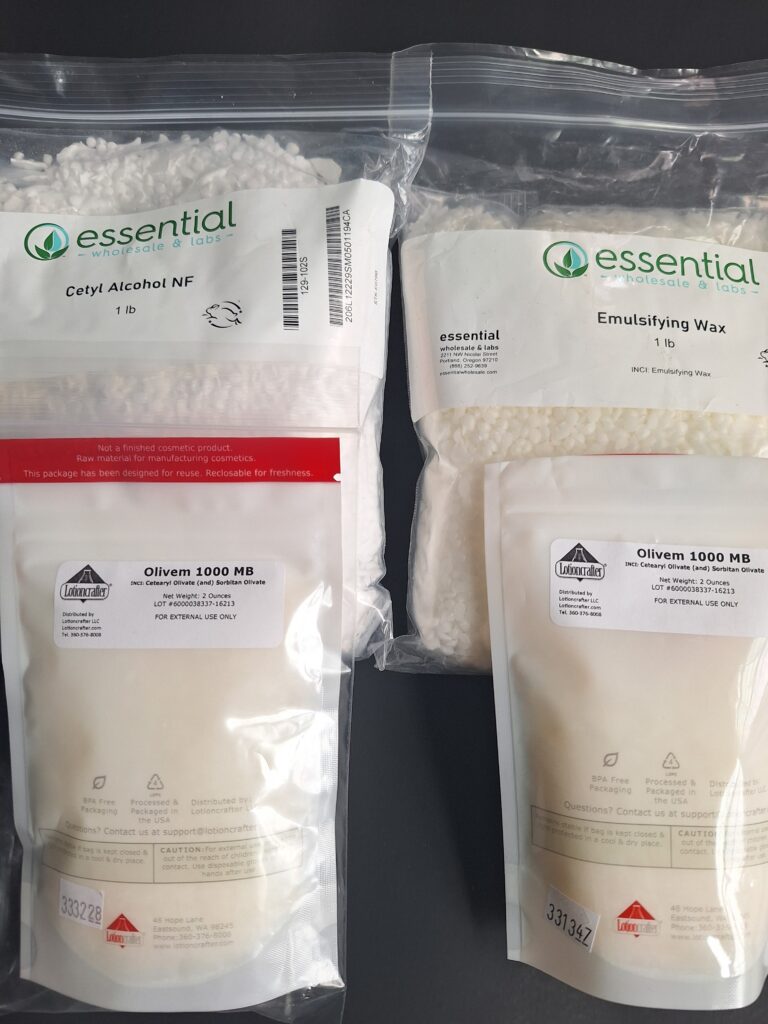
I have learned that making lotions, shampoos, and creams, requires an emulsifier. That is because oil and water do not mix. If you pour oil into water, you will see that the oil floats on top. So, if you want the ingredients to blend or bind, we need an emulsifier to keep them from separating. Thus, creating an emulsion of oil and water.
It is important to know the usage amount of the emulsifier being used. If it is not listed on the supplier’s website, then you will need to reach out to that supplier.
Your supplier will also be able to provide information such as when you are formulating with that emulsifier whether you should pour the heated oil phase (O/W) into the water. This is where the oils, fats, and butters are melted. These emulsions are more liquid. Or pour the water phase (W/O) into the heated oils. The distilled water and hydrosols are heated to the same temperature as the heated oil phase. This emulsion will be thick and greasy.
Emulsifiers usually go into the heated oil phase.
When purchasing ingredients, it is best to know their INCI name so that if you are purchasing the item again from a different supplier, you will know that you are getting the same product. The INCI (International Nomenclature Cosmetic Ingredient) name identifies that ingredient.
There are many emulsifiers that can be used in your skincare products. Below are just a few to consider.
Olivem 1000. Derived from olive oil. Moisturizes the skin.
Emulsifying Wax NF. Helps to nourish and moisturize the skin.
Cetearyl Alcohol. Helps to soften and soothe the skin.
Lecithin. Moisturizing and skin softening.
BTMS50. Used in hair and skincare products. Conditions the hair.
Leave a Reply